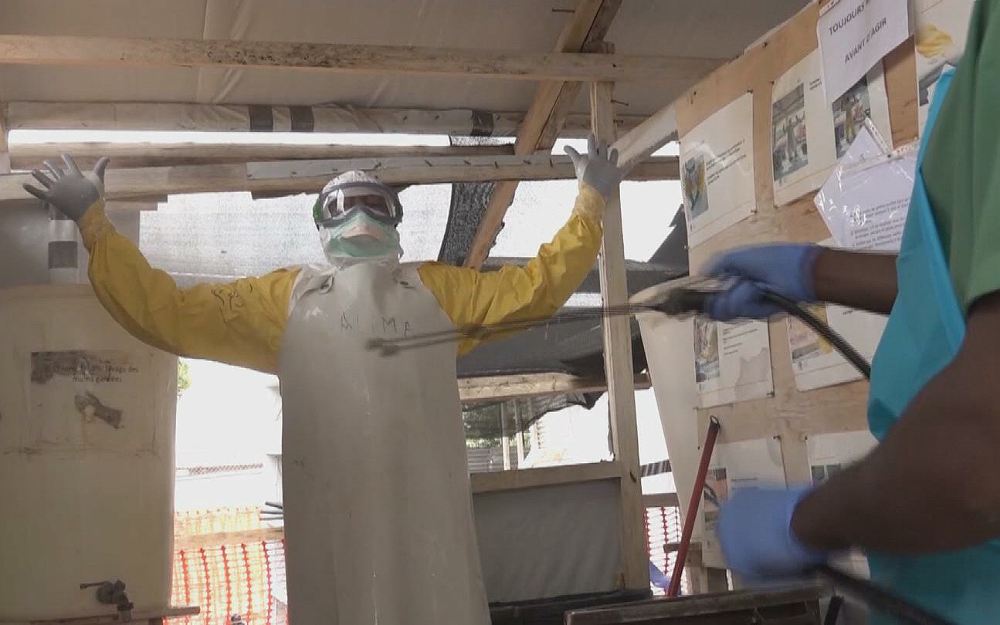Two new drugs being tested on Ebola patients in the Democratic Republic of the Congo (DRC) show that more than 90 per cent of people can survive if treated within three days of showing symptoms, the World Health Organization (WHO) said today (13 Aug).
The situation in the infected east of the country remains a major challenge since the outbreak was declared an international health emergency on 17 July by the WHO. The current outbreak is the second-deadliest ever and has killed more than 1,800 people in the DRC in the past year.
A randomized trial started in November last year compared four treatments, two of which – REGN-EB3 and mAb114 – showed significantly better outcomes than the others. These results were compelling enough that an independent monitoring board has recommended an early end to the trial, and all patients with the disease in the DRC will now be treated with these two drugs.
WHO spokesperson Christian Lindmeier told journalists in Geneva, “modifications have been made to the treatment of Ebola patients in the Democratic Republic of the Congo.”
He said, “patients will now receive one of two investigational Ebola treatments. It’s Regeneron or mAb114. A review of a randomized controlled trial (RCT) monitored by an independent data safety monitoring board found that two of the treatments outperformed the two others.”

The mortality rate for REGN-EB3 and mAb114 was 29 per cent and 34 per cent respectively, and the drugs worked even better for patients who were treated early -within three days of infection. In these cases, the mortality rate dropped to 6 per cent for REGN-EB3 and 11 per cent for mAb114, said Christian Lindmeier.
He added, “this is great news of course, and this news will save lives and move us closer to finding an effective treatment for Ebola.”
While they are very important tools in the toolbox against Ebola, WHO said that the use of vaccines, as well as the two very promising treatments, will nonetheless not stop Ebola alone.
Lindmeier said, “a total cure may not be possible even if you have a 100% effective drug, it still leaves the human factor of reaching care early enough.”
Prevention, surveillance, active case finding and acceptance of team members and partners within communities are also critical in impacting survival rates. People are encouraged to keep an eye on their loved ones and seek care immediately if probable symptoms arise.
WHO and its partners will now conduct an extended study with all patients in the DRC receiving one of the two effective treatments to assess which works best.
In a related development, UNICEF has warned that the number of children in the DRC who have been orphaned or left unaccompanied due to the Ebola epidemic has more than doubled since April.
Since the start of the outbreak just over a year ago, UNICEF and its partners have registered 1,380 orphans – those children who have lost one or both parents to Ebola.
Nearly 2,500 children have been separated from their parents or caregivers, either left alone while adults undergo screening and treatment, or isolated because they have been in contact with an infected person, according to UNICEF.
All of these children require psychosocial assistance to mitigate the effects of loss, stigma and isolation. Children are watching parents die in front of them or do not know when loved ones taken to Ebola treatment centres might return, said UNICEF, which added that there have been instances where families have rejected children. Psychosocial workers are doing intensive work with families and communities to convince them that these children are not going to infect anybody, and that most importantly they need and deserve love and care~UNTV CH
You know Independent Journalism needs fund to run the not for profit venture Please contribute if you like our effort Donate through PayPal Or paytm +919903783187 phone pe +919875416249 Google Pay +919875416249 or write to us editor@crimeandmoreworld.com










